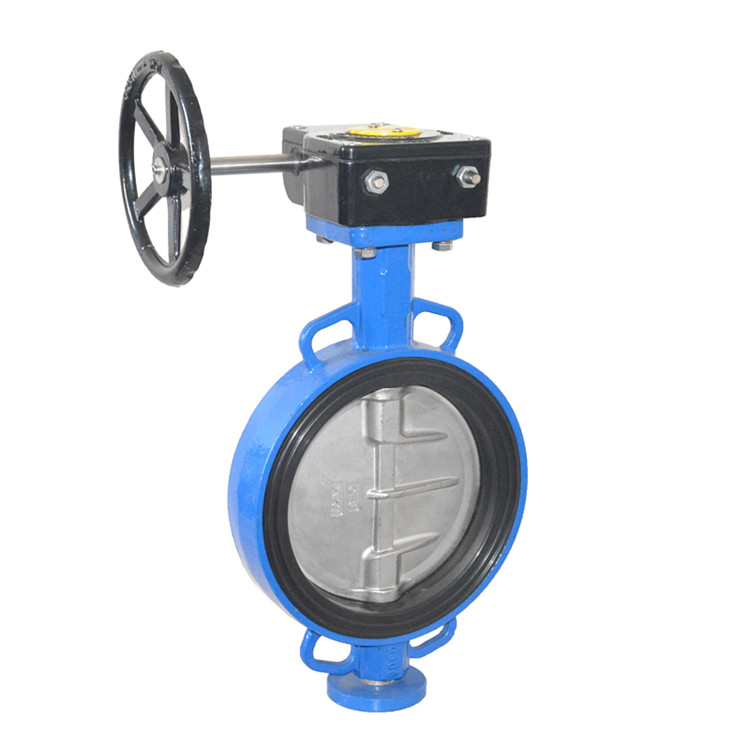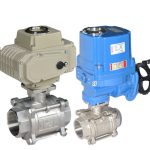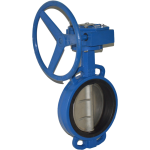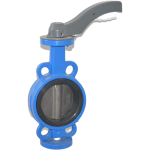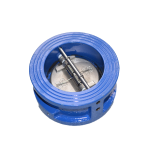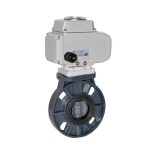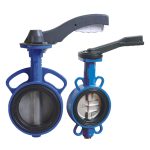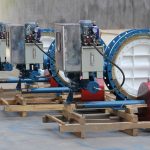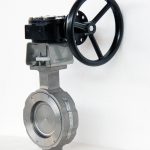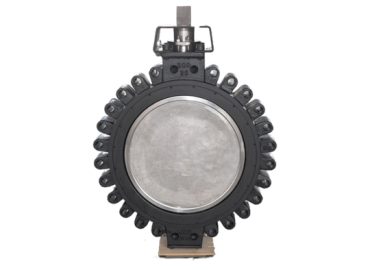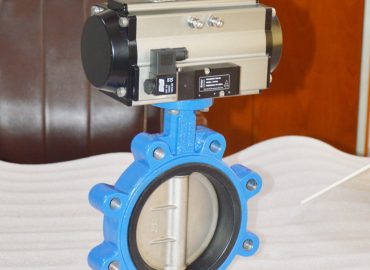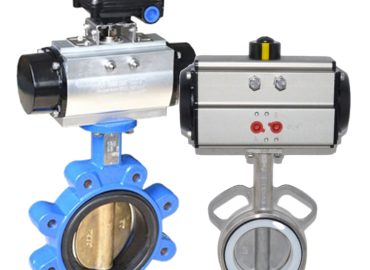Butterfly valves are popular choices for regulating fluid flow in various systems, including water and HVAC industries. However, the signal butterfly valve is a unique type of butterfly valve that is ideal for precise pressure or flow control applications. It operates differently from other types of valves, such as gate, globe or ball valves. Understanding its operation, advantages, and applications is crucial for selecting the optimal valve for your system. In this blog post, we will take a closer look at how the operation of a signal butterfly valve differs from other types of valves, its applications, installation, and maintenance best practices.
Introduction
The operation of a signal butterfly valve differs from other types of valves in several ways. Unlike gate valves, which use a gate that moves perpendicular to the flow to regulate fluid control, or globe valves that use a linear motion, butterfly valves use a rotating disc or plate to manage fluid flow. Signal butterfly valves add a unique feature to this design, which makes them ideal for precise pressure or flow control applications. They utilize unique metal discs or high-performance polymer seals to ensure precision shut off with extended life. Compared to other types of valves, signal butterfly valves provide quicker and easier operation, improved accessibility, and a higher flow coefficient, making them optimal for use in many applications where low-maintenance, precise control, and fast response times are crucial.
Explanation of a signal butterfly valve
A signal butterfly valve is a type of rotary valve that uses a flat, circular disc to control or regulate the flow of fluids. The valve is named for its design, which includes a signal function that allows operators to precisely control the valve position and flow rate using a signal from the control system. This feature is important in applications where precise flow control is necessary, such as in the chemical, food and beverage, and pharmaceutical industries. The valve is typically mounted between two flanges, and the position of the disc is controlled by a pneumatic, hydraulic, or electric actuator. Signal butterfly valves are available in a range of sizes and designs, including concentric and eccentric designs, each tailored for specific applications.
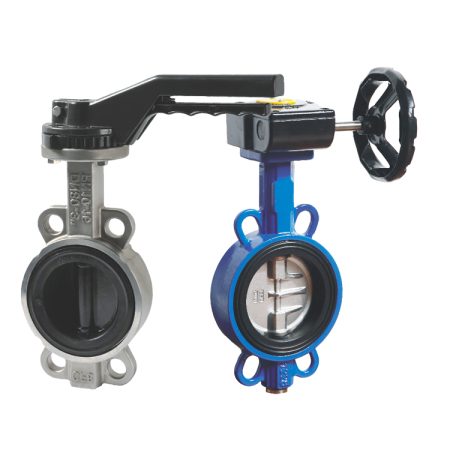
Importance of understanding the operation of valves
Understanding the operation of valves is crucial in selecting the right valve for your system and ensuring optimal performance, safety and efficiency. Different types of valves have different design considerations that make them suitable for various applications. Factors such as fluid properties, environmental conditions, pressure and temperature requirements, and valve type must be considered to ensure optimal flow control, efficient operation, and reliable shutoff capabilities. Understanding how valves operate can help in selecting the appropriate valve for your application, as well as in identifying any issues or malfunctions in the valve that may impact the system’s performance. Proper understanding of valve operations is also essential for their maintenance and care, ensuring that they provide reliable and long-lasting service.
Purpose of the blog post
The purpose of this blog post is to provide a closer look at the operation of a signal butterfly valve and how it differs from other types of valves. Understanding the mechanics and design considerations of this type of valve is essential for selecting the proper valve for your application and ensuring optimal performance, safety and efficiency. This post will provide an overview of different types of valves, a detailed explanation of a signal butterfly valve’s operation, applications of signal butterfly valves, installation and maintenance procedures, and an overall understanding of why the knowledge of valve operation is critical in selecting and maintaining the appropriate valve for your system.
Overview of Different Types of Valves
There are several types of valves available today, each designed for specific applications. Gate valves use a gate to block or create a path for the fluid flow. Globe valves use a plug or a stopper to control the flow of fluids. Ball valves, which have become increasingly popular, use a spherical ball to control fluid flow. Butterfly valves, on the other hand, have a rotating disc or plate that regulates fluid flow. Understanding the differences in valve designs and operations can help you determine the best type of valve for your system, taking into account the pressure, temperature, fluid properties, and overall system requirements.
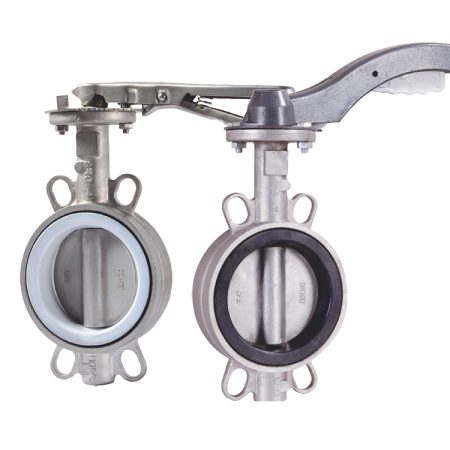
Gate valves
Gate valves use a gate or wedge to regulate fluid flow. The valve gate is raised and lowered to allow or stop the flow of fluid. The valve gate can be divided into two types, the rising stem valve, and the non-rising stem valve. Rising stem valve means the stem rises and opens as the gate is moved up, while the non-rising stem valve threads the stem into the gate to move it up and down while maintaining the valve’s same height. Gate valves can typically withstand high pressures and are suitable for use in various systems and industries. However, they can be slower to operate and require more effort to close fully, making them less suitable for applications that require quick shut-off or precise flow control.
Globe valves
Globe valves are designed to regulate fluid flow using a plug or stopper that moves vertically up and down. The plug can be raised or lowered to restrict or allow fluid flow, providing precise control over the rate of flow. Globe valves are commonly used in applications where accurate control is critical, such as fuel gas supply, steam supply, and high-temperature water supply. Compared to gate valves, globe valves are faster to operate and typically require less effort to close. However, they are not ideal for use in high-pressure systems, and their angular flow paths can cause more significant pressure drops than other types of valves, reducing efficiency.
Ball valves
Ball valves are some of the most popular valves in use today. They use a spherical ball with a hole in the middle to regulate fluid flow. When the ball is turned so that the hole is perpendicular to the direction of flow, the flow is blocked entirely. Conversely, when the ball is turned so that the hole is parallel to the direction of flow, fluid can pass through the valve unobstructed. Ball valves offer quick and easy operation, have fewer leaks, and are highly resistant to corrosion. They are suitable for use in applications that require high-pressure control and precise flow regulation. However, ball valves may not be the best choice for systems with highly viscous fluids, as the valve’s ball may become clogged or damaged by debris.
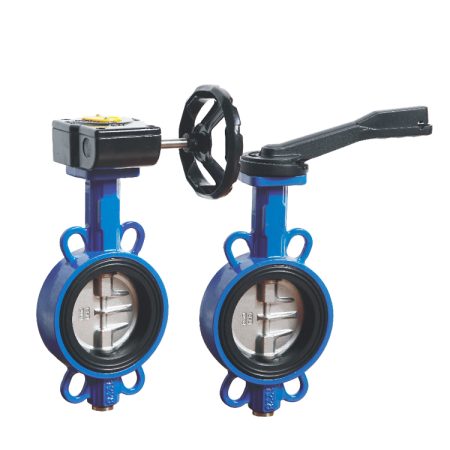
Butterfly valves
Butterfly valves use a rotating disc or plate to regulate fluid flow, providing quick and easy operation. When the valve is fully open, the disc is parallel to the direction of flow, which allows fluid to pass through unobstructed. When the valve is fully closed, the disc is perpendicular to the flow, blocking fluid from passing through the system entirely. Butterfly valves are known for their low-maintenance requirements, low pressure drops, and high flow coefficients, making them optimal for use in large systems where low maintenance is essential. However, they may not be suitable for use in high-temperature and high-pressure applications, and their design may not provide the same level of precision in flow regulation compared to other types of valves, such as globe valves or ball valves.
Explanation of their operations
The operation of valves is determined by their design, type, and applications. Generally, valves are designed to control the flow, pressure, and direction of fluids via robust mechanisms that can withstand the rigors of intense, often hazardous environments. Depending on the type of valve, their operations can vary significantly. Gate valves, for instance, use a gate or wedge that lifts to allow fluid flow when opened and closes when dropped down to stop the flow. Ball valves use a round-shaped ball to control fluid flow using open and close movements. Globe valves use a linear motion to move a stopper up and down to allow or stop flow, while butterfly valves use a rotating disc or plate to control fluid flow. The proper understanding of the operations of the different types of valves can help operators and users make informed decisions when selecting valves for specific applications.
Operation of Signal Butterfly Valve
The operation of a signal butterfly valve is unique to its design as it primarily uses a flat, circular disc to control fluid flow. The disc is mounted on a rotating shaft that passes through the center of the valve’s body. A signal function is added to this rotation, which enables precise control of valve position and flow rate using a signal from the control system. The signal function is typically controlled by a pneumatic, hydraulic, or electric actuator, which mounts on top of the valve. The actuator is connected to the signal function, which ultimately controls the disc rotation to allow, restrict, or stop fluid flow in the pipeline. The unique signal function system provides quick and easy operation, improved accessibility, and high flow coefficients that make it optimal for use in several critical applications where precise flow or pressure control is a requirement.
Description of components and design of signal butterfly valve
The signal butterfly valve is designed with a flat, circular disc as the primary component that controls fluid flow. The disc is mounted on a rotating shaft that passes through the center of the valve’s body. The signal function, which is unique to signal butterfly valves, is another critical component that enables precise control of the valve’s position and flow rate using a signal from the control system. The signal function consists of an actuator that sits on top of the valve and controls the rotation of the disc through a series of cams and followers. The disk is seated between two flanges and secured in place, creating a leak-proof seal. The valve also has a handle, which is used to manually control the valve when necessary. The valve’s body is typically made from materials resistant to corrosion and erosion, such as carbon or stainless steel or ductile iron. The design of signal butterfly valves varies from manufacturer to manufacturer, with some featuring concentric, single offset, or double offset designs.
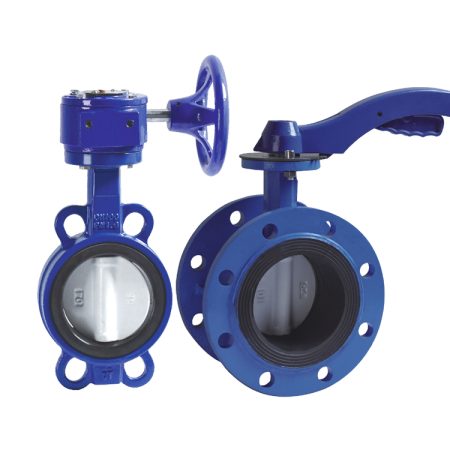
How signal butterfly valve differs from other types of valves
Signal butterfly valves differ from other types of valves in several ways. Unlike gate valves, they offer quick and easy operation that requires minimal effort. Unlike globe valves, they have a low pressure drop and high flow coefficient, making them more efficient for high flow rate applications. Compared to ball valves, signal butterfly valves have a smaller footprint, making them ideal for use in installations where space is limited. The signal function, unique to signal butterfly valves, enables precise control of the valve’s position and flow rate using a signal from the control system, making them ideal for applications that require high precision in flow control. Overall, signal butterfly valves combine unique design features and precise control mechanisms that make them an excellent choice for a variety of flow control applications.
Step-by-step explanation of signal butterfly valve’s operation
The operation of a signal butterfly valve is quite straightforward and involves the following steps. First, the actuator is installed, which controls the signal function, and the valve is mounted on the respective piping. Next, the control system sends a signal to the actuator to rotate the disc, which then rotates the signal function. This allows the disc to move between the open and closed positions, thus modulating the fluid flow in the pipeline. When the valve is fully open, the disc is parallel to the direction of flow, allowing fluid to pass through unobstructed. In contrast, when the valve is fully closed, the disc is perpendicular to the flow, blocking fluid from passing through the system entirely. The signal function’s precisely controlled rotation enables the valve to perform highly accurate and efficient flow control, ensuring the system operates optimally. The valve’s handle is also used to manually control the valve, allowing for easy operation in case of emergencies or system maintenance.
Applications of Signal Butterfly Valves
Signal butterfly valves are used in a variety of applications that require precise flow control and accurate position sensing. The unique design of these valves offers a range of benefits that make them ideal for use in applications such as marine, pulp and paper, water treatment, food processing, and pharmaceuticals. Their robust construction and corrosion-resistant materials make them ideal for use in harsh and corrosive environments. They are also used in high-pressure systems where high flow coefficients are required. Because of their precise control mechanism via the signal function, signal butterfly valves are ideal for use in power plants, natural gas distribution systems, and HVAC systems. Their low-pressure drop and high flow coefficient make them efficient for large flow rate applications. They can also be used in applications that require frequent cleaning or sterilization, such as chemical processing and bio-pharmaceutical manufacturing.
Comparison of signal butterfly valve to other valves
Compared to other valves, signal butterfly valves offer several advantages, such as their ease of operation, lower profile design, and lower pressure drop. Unlike globe valves, signal butterfly valves are easier to operate, have a lower chance of maintenance requirements, and have a lower profile design that makes them advantageous in tighter installations. Compared to ball valves, signal butterfly valves offer precise flow control using their unique signal function, making them ideal for critical applications that require high precision. Additionally, signal butterfly valves have a lower pressure drop than ball valves, making them an ideal choice for high flow rate applications. However, compared to gate valves, signal butterfly valves offer less robust construction, making them less optimal for withstanding high-pressure applications.
Advantages of signal butterfly valve in certain systems
Signal butterfly valves offer several advantages in certain systems. One of the most significant advantages is their precise flow control mechanism, which makes them ideal for systems that require accurate and consistent flow regulation. For instance, process plants that use chemicals, pharmaceuticals, or other high-value fluids require precise control over flow rates. Signal butterfly valves offer an efficient solution capable of controlling the flow rate within tight tolerances, reducing waste and increasing process efficiency. Another advantage of signal butterfly valves is their low-profile design, making them ideal for use in installations with limited space. This advantage makes them popular in HVAC systems, where minimizing space usage is essential. Signal butterfly valves also require less maintenance than other types of valves, making them ideal for systems that require reduced downtime or regular maintenance. Overall, the precise control, low-profile design, and low-maintenance requirements make signal butterfly valves an ideal choice for a range of applications.
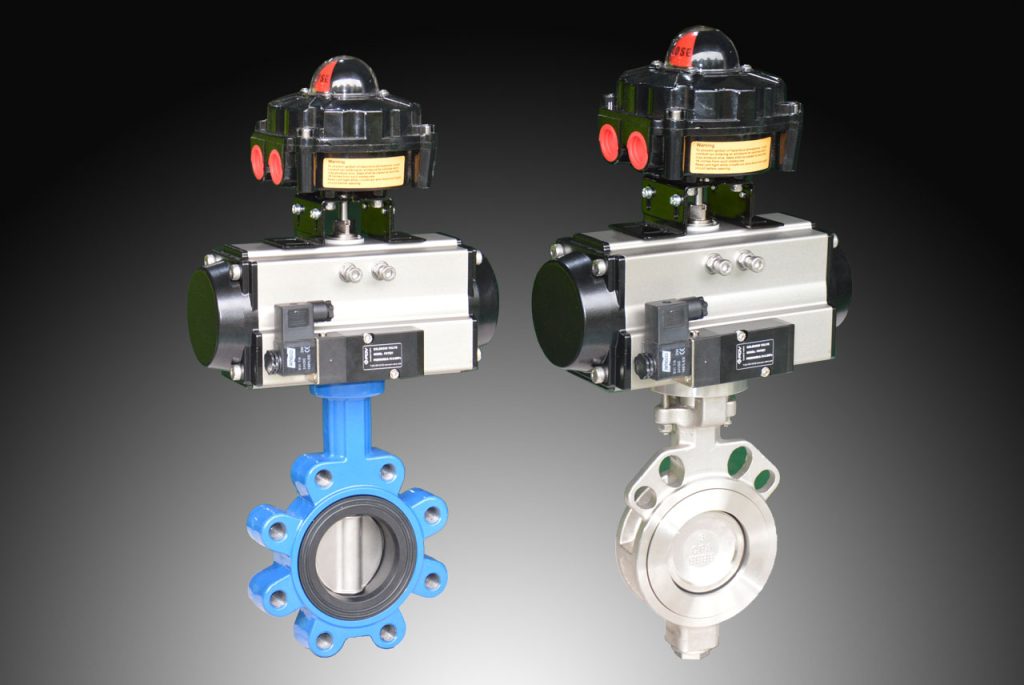
Common industries that use signal butterfly valves
Wafer butterfly valve are commonly used in a variety of industries that require precise flow control and accurate position sensing. One of the main industries that utilize signal butterfly valves is the chemical industry, where accurate and precise control of fluid flow is critical for safety, efficiency, and quality control. Another industry that employs signal butterfly valves is the food and beverage industry, where the valves are used in processing and conveying various liquids, including water, beverages, and liquid food. The pharmaceutical industry also frequently employs signal butterfly valves for liquid processing applications. Other industries that employ signal butterfly valves include paper and pulp, water treatment, marine, HVAC, and power generation. The unique advantages of signal butterfly valves, such as their precise flow control mechanisms and reduced maintenance requirements, make them a popular choice in a range of industries that require accurate and efficient flow control.
Installation and Maintenance of Signal Butterfly Valves
The installation and maintenance of lug butterfly valve are essential to ensure their efficient operation and long-term durability. During installation, it is crucial to ensure that the valves are correctly mounted and oriented to prevent leaks and ensure optimal flow control. The correct use of flanges, gaskets, and bolts is also crucial to obtaining a tight and reliable seal. Like all valves, signal butterfly valves require periodic maintenance to keep them functioning correctly. Regular maintenance activities include inspecting and cleaning the valve and its components, lubricating critical parts, tightening loose bolts or fasteners, and ensuring the signal function operates correctly. Inspection of the valve’s seals is also necessary to ensure that they do not deteriorate, which may result in leaks or failed operations. In addition, routine calibration of the valve and the actuator is necessary to ensure that the valve control system operates efficiently and precisely. Therefore, regular inspections and adherence to manufacturer maintenance schedules are essential to ensure the safe and efficient operation of signal butterfly valves over their useful life expectancy.
Proper installation procedures
Proper installation procedures are paramount for signal butterfly valves to operate effectively and safely. The first step is to ensure that the valve’s installation location is appropriate for its intended application, and the valve’s size aligns with the pipeline’s size. The valve’s installation should follow the manufacturer’s specifications and guidelines to avoid issues such as leaks, binding, or damage that may lead to valve failure. Proper flange alignment, selection of gaskets, and tightening bolts and nuts to the manufacturer’s recommended torque settings ensures a tight and secure seal. A thorough inspection of the valve and its components before installation is necessary to ensure there are no defects, and any components out of the manufacturer’s specifications should be replaced. Post-installation testing of the valve ensures that it complies with the specified performance requirements and safety standards. By following manufacturer instructions and industry standards, proper installation procedures guarantee a long service life, optimal valve performance, and safety.
Routine maintenance to ensure proper operation and longevity
Regular maintenance is essential to ensure the proper operation and longevity of flanged butterfly valve. Routine maintenance activities include inspecting and cleaning the valve and its components, lubricating critical parts, and calibrating the valve and the actuator. Valve components should be checked for any signs of wear, damage, or corrosion that may affect operation or seal integrity. The stem or shaft must be lubricated regularly to prevent corrosion or binding, while the actuator should be tested frequently to ensure it operates correctly. Inspection of seals is crucial to prevent leaks and preserve the integrity of the valve system. The frequency of maintenance will depend on factors such as the environment, the media flowing through the pipeline, and frequency of use. Adherence to manufacturer maintenance schedules and recommended procedures is crucial for reliable and safe valve performance. By performing routine maintenance, potential problems can be identified early, preventing costly repairs or replacements, and ensuring the safe and long-term operation of the valve.
Importance of selecting reputable manufacturers and professionals for installation and maintenance
Selecting reputable manufacturers and professionals for the installation and maintenance of signal butterfly valves is crucial to ensure the valves’ proper functioning, operational reliability, and longevity. Choosing quality products and professionals with a proven track record of delivering high-quality services eliminates the risk of substandard products and suboptimal performance. Reputable manufacturers and professionals have a deep understanding of the products they sell or maintain, ensuring proper installation and maintenance procedures that align with recognized industry standards. They also provide necessary product documentation, warranties, and after-sales support, ensuring customer satisfaction and peace of mind. A mistake in the installation or maintenance of signal butterfly valves can lead to severe consequences in terms of human safety, environmental pollution, and plant downtime. Therefore, selecting reliable manufacturers and professionals guarantees that valves are installed and maintained efficiently, safely, and with optimal performance.
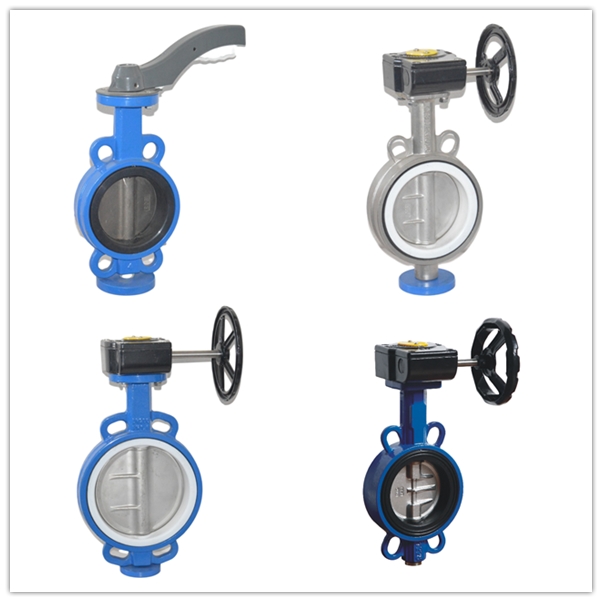
Conclusion
In conclusion, signal butterfly valves are excellent alternatives to other types of valves due to their unique design features, precise control mechanisms, and simplified operation. Unlike other valves like gate valves, ball valves, and globe valves, signal butterfly valves offer a superior combination of precise flow control, low pressure drop, and reduced maintenance needs. With their low profile design, signal butterfly valves are easily installed in tight spaces, making them ideal for use in HVAC systems and process plants. Their unique signal function allows for highly accurate and efficient flow control, ensuring the system operates optimally.
However, it’s vital to install and maintain the pneumatic valve correctly to ensure its efficient operation and long-term durability. Proper installation procedures, including correct mounting, flange selection, and gasket usage, are vital in preventing leaks, binding, or damage that may lead to valve failure. Maintenance includes inspecting and cleaning valve components regularly, lubricating critical parts, inspecting seals, and calibrating the valve and actuator. Such precautions ensure that the valve performs effectively over its lifespan, avoiding repair costs or replacements and ensuring safe and reliable valve operation.
Finally, choosing reputable manufacturers and professionals for valve installation and maintenance is crucial to ensuring optimal valve performance. By selecting a reliable manufacturer with a proven track record, you can be confident that the valves installed will perform efficiently and safely. Routine maintenance by professionals guarantees that any potential problems or defects are identified early, preserving the valve’s long-term efficiency and properly functioning system.
In conclusion, signal butterfly valves offer a range of advantages over other valves, and proper installation and maintenance ensure they provide optimal performance over their lifespan. With their unique signal function, low profile design, and precise flow control, signal butterfly valves are an excellent choice for a variety of applications that require precise, efficient, and reliable flow control.
Recap of key points
Throughout this blog post, we have explored the operation of signal butterfly valves and how they differ from other types of valves. We learned that signal butterfly valves offer precise flow control, lower pressure drop and easier operation than other valves. Proper installation procedures and routine maintenance are necessary to ensure efficient operation and long-term durability. It is essential to choose reputable manufacturers and professionals for the installation and maintenance of these valves to ensure optimal valve performance. Overall, signal butterfly valves are an ideal choice for a range of industrial applications that require accurate and efficient flow control.
Importance of selecting the right valve for your system
Selecting the right valve for your system is crucial to ensuring efficient operations and optimal performance. The right valve can provide accurate flow control and consistent performance, reducing the risk of costly maintenance, inefficiencies, and safety hazards. Choosing the wrong valve can lead to suboptimal system performance, lower efficiency, increased safety risks, and higher operating costs. Therefore, before selecting a valve, you must assess your system requirements, operating conditions, and other critical factors such as the media flowing through the pipeline and pressure requirements. By selecting the right valve suitable for your system, you ensure that it operates optimally, is efficient, and performs safely, providing you with peace of mind and system longevity.
Final thoughts and recommendations.
In conclusion, electric butterfly valve offer a range of advantages over other types of valves for industrial applications, including precise flow control, lower pressure drop, and simplified operation. The right selection, installation, and maintenance of the valve are crucial to ensuring efficient and safe operation and long-term durability. Choosing reputable manufacturers and professionals for installation and maintenance is also vital for optimal valve performance. When selecting a valve, it is crucial to assess your system requirements and operating conditions to select the right valve that operates optimally, efficiently, and safely. If you’re not sure which valve is right for you, consult with a professional to guide you through the selection process. With the right valve and proper maintenance, you can enjoy efficient system performance, safety, and peace of mind.


